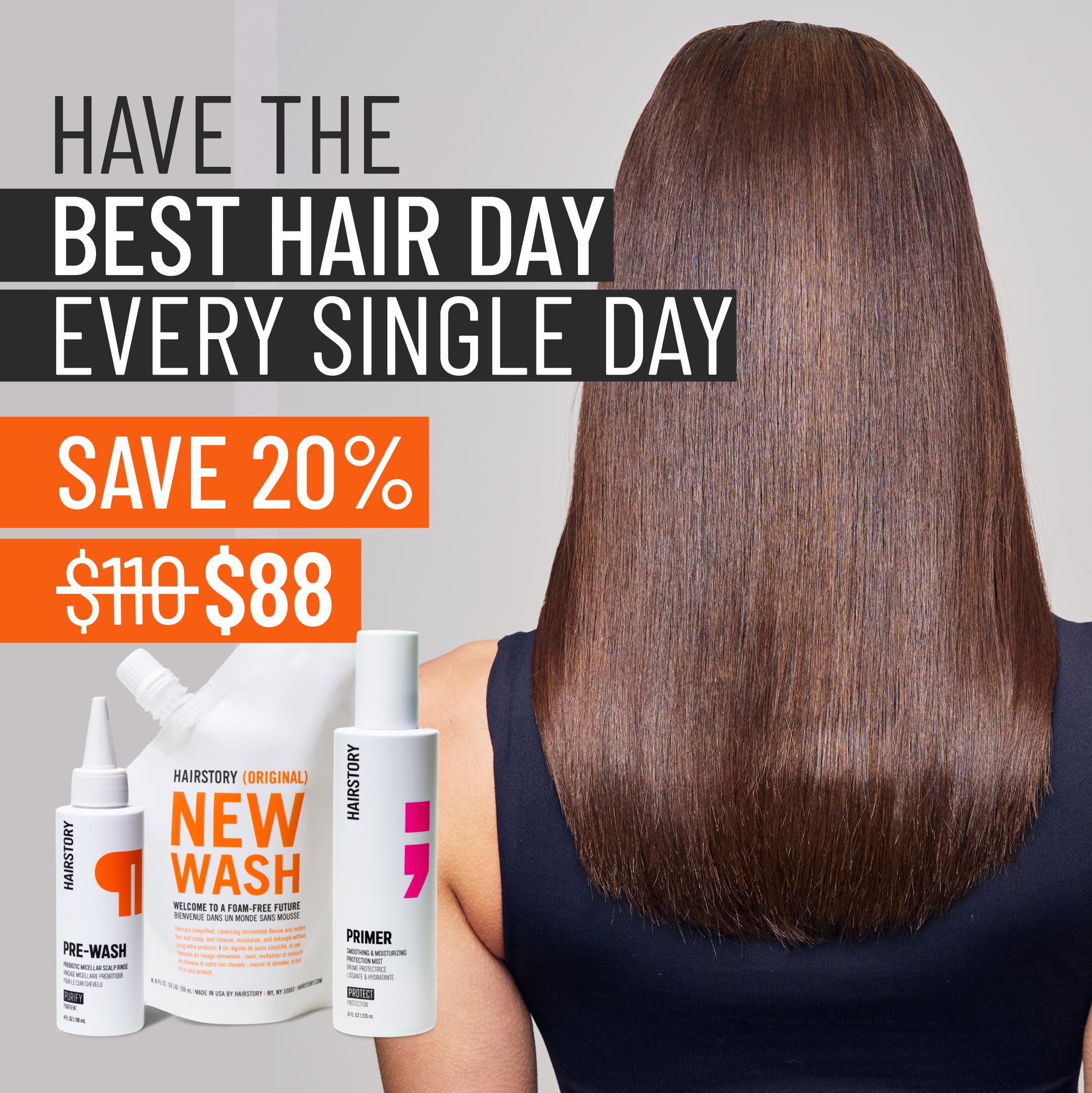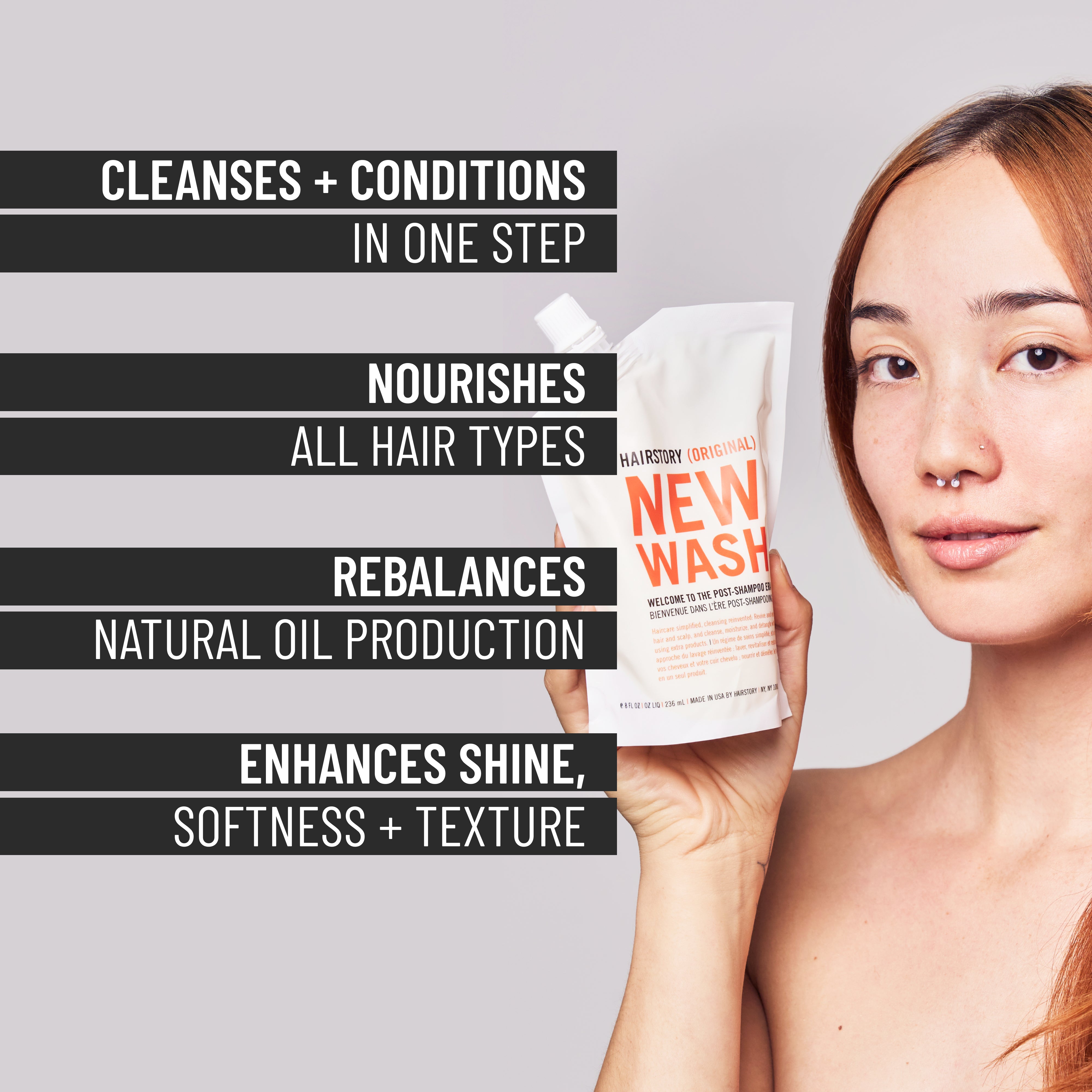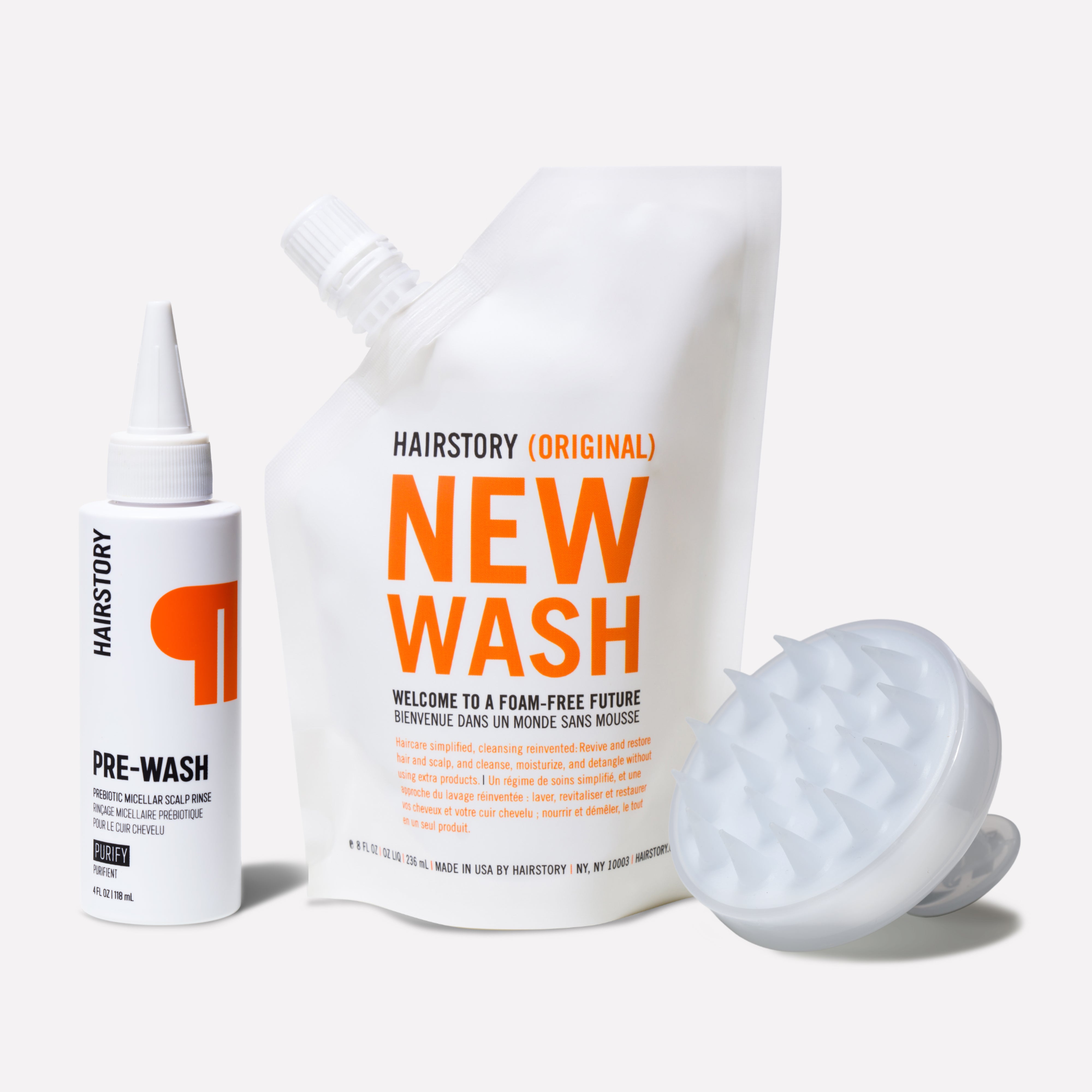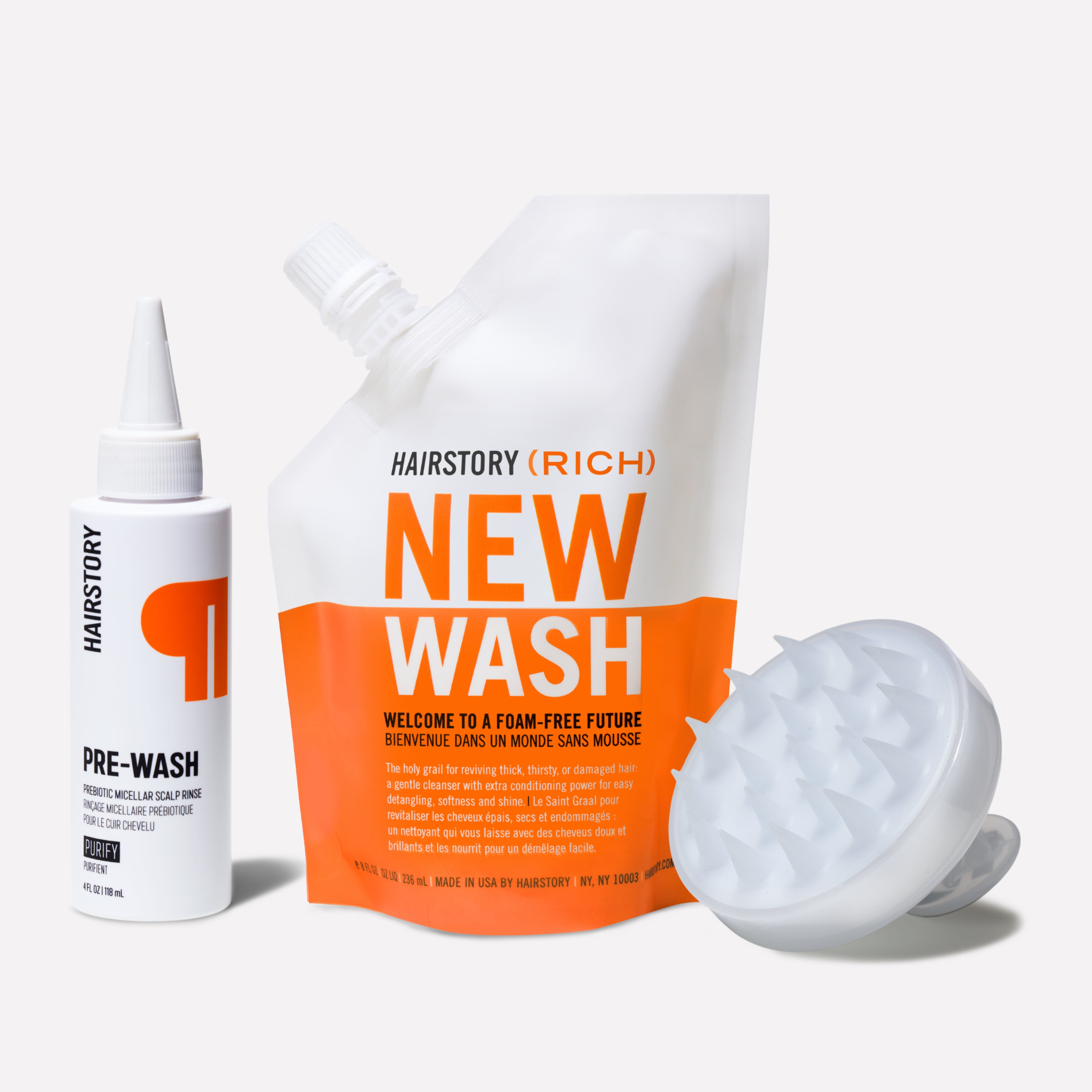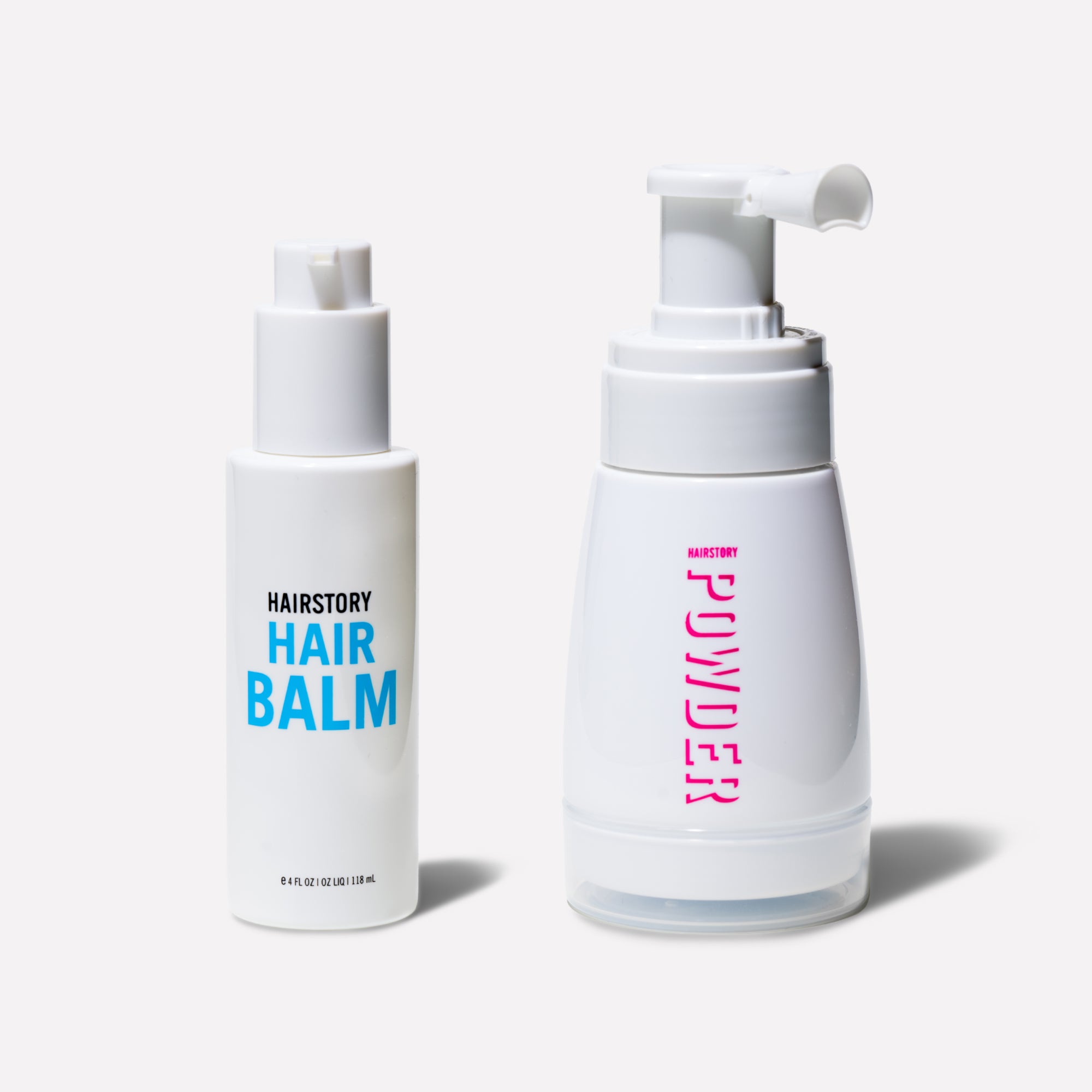Scalp Exfoliation: Why, How, & How Often
Your body knows how to keep you supplied with new skin cells and get rid of the old ones in a process known as exfoliation. Sometimes, though, your scalp needs some extra care to ensure it stays healthy and buildup-free—a process known as scalp exfoliation. That’s when a scalp massage brush and natural home remedies can come in handy. Let’s start at the top: How do you exfoliate your scalp?
While your hair probably gets lots of attention, happy hair is truly impossible without a happy, healthy scalp. Skipping proper scalp exfoliation can leave hair follicles clogged, leading to hair loss, thinning, and weaker strands. Keeping your hair follicles clear of dead skin cells and built-up hair products is key. But before you rush to scrub your scalp to remove buildup, find out whether a scrub is really what your scalp needs.
Do You Need a Scalp Exfoliant?
Though exfoliating can benefit any hair type, one size does not fit all. Whether or not you should use an exfoliant regularly is dependent upon your scalp type and product usage. Here are a few ways to tell whether you actually need to use scalp exfoliation:- If you love to use lots of hair products in your hair, it might be hard to remove those products simply by washing your hair. All of the waxes, powders, polymers, and silicones that mix with your sebum, sweat, and dead skin cells can stay firmly attached to your scalp. Scalp exfoliation can help, especially if you have finer-textured hair that is more prone to build-up.
- If your skin type runs more dry or you live in an arid climate and your scalp flakes, a scalp scrub can limit symptoms and help lessen the amount of flakes you see daily.
- If you have developed seborrheic dermatitis (see below), scalp exfoliation can help you control the flaky symptoms.
Scalp Scrub DIY 101
There are two types of exfoliants to consider. Physical exfoliants involve a granular substance such as sugar, salt, clay, or pumice. Chemical exfoliants include various types of acids that act as solvents for excessive oil and debris.
But here’s the rub: Just as different skin types need different skincare products, different hair types require different scalp treatments. For example, someone with oil-prone skin will benefit from a stronger acid-based approach, while others may prefer a DIY scalp scrub made with natural ingredients to gently cleanse and nourish the scalp.
Why Exfoliate Your Scalp?
Exfoliating your scalp can feel great. Beyond that, it can have an invigorating effect. The massaging action alone can stimulate blood flow to ensure a steady stream of nutrients to the hair follicles where each strand is born and raised.
Scalp exfoliation is particularly beneficial for those dealing with dandruff, dry skin, or oily hair. For individuals searching for effective ways to eliminate dandruff, exfoliation often helps reduce symptoms and promotes overall scalp health.
Scalp exfoliation has a range of benefits for your overall scalp health including:
1. Controlling dandruff
While shedding skin is a natural process, dandruff is often a result of seborrheic dermatitis, a condition that can occur when oil glands turn the skin oily, red, and scaly. Other times, the cause of dandruff is a fungus called Malassezia that causes skin cells to accelerate their life cycle and shed more quickly. Stress, hormones, lifestyle, and age all influence the pH of your skin, which makes it more or less hospitable to these yeasts. While exfoliation may not address the cause of dandruff, it will help you control flaky scalp symptoms.2. Removing buildup
Dry shampoo, gels, and defrizzing serums—especially if silicone-based—can all build up on the scalp, clogging hair follicles and compromising hair growth. Here, scalp exfoliation can help dissolve lingering residue and clarify the scalp. Pairing this with a detergent-free hair wash ensures a deeper cleanse without stripping essential oils.3. Adapting to the seasons
Seasonal changes, especially winter, can cause a flaky scalp. A scalp exfoliation treatment will not only buff away the flakes but can also restore moisture and balance to a dry scalp.4. Stemming hair loss
Various factors lead to shedding more than usual. However, if you’re not suffering from alopecia areata – total and often sudden hair loss – chances are your problem is caused by oxidative stress as a result of having a deficiency of antioxidants to counteract an excess of free radicals in your body. Oxidative stress damages skin cells and the hair incubating inside the hair follicles. Some vitamins function as antioxidants such as Vitamin C, Vitamin D and Vitamin E.5. Combating environmental factors
Environmental factors such as radiation from the sun, pollution, cigarette smoke and other toxic chemicals are also known to trigger the formation of free radicals. New research shows that air pollution has significant effects on our scalps.How Often to Exfoliate Your Scalp
- Normal Scalp: Once a week is sufficient to maintain a healthy balance.
- Oily Scalp: 2-3 times per week to manage excess oil and buildup.
- Sensitive Scalp: Once every two weeks to avoid irritation while still removing debris.
- Dry Scalp: Once every 7-10 days to reduce flakes and dryness without over-exfoliating.
How to Exfoliate Your Scalp
- Exfoliate the scalp with your product of choice when hair is freshly washed and still wet.
- Comb through and separate your hair into several sections (fewer if fine, more if thick).
- Apply an exfoliating scrub (recipes below) as close to the scalp as you can with your fingertips and rub in a gentle, circular motion. A shower brush will help. Think of polishing or buffing rather than scouring.
- Leave in for several minutes and rinse thoroughly.
We recommend following these steps while exfoliating:
Scrubbing can aggravate certain conditions. Avoid exfoliating your scalp if you have:
- Seborrheic dermatitis
- Psoriasis
- Acne
- Eczema
- An active infection, such as ringworm
- An open cut or sore
- Lice
The skin on the scalp is already more sensitive than elsewhere on your body. If you experience any discomfort, swelling, or irritation, exfoliation may not be for you.
The skin on the scalp is already more sensitive than elsewhere on your body. If you experience any discomfort, swelling, or irritation, stop and rinse. Exfoliation may not be for you. After you have scrubbed your scalp with our scalp exfoliant, avoid direct sunlight. We recommend wearing a hat or using a sunscreen that is specially formulated for your hair and your scalp.Selecting a Scalp Exfoliant
Next, you need to determine the best type of scalp exfoliant for your scalp type: physical exfoliant or chemical exfoliant.
Chemical exfoliants do not require scrubbing or massaging to remove buildup. Instead, these exfoliants remove debris on their own. Naturally exfoliating acids and enzymes do the work for you, but if you’re chemically sensitive, you might want to avoid commercial products and make your own with ingredients you’re sure you can tolerate.
Those with an oily scalp may benefit from ingredients such as charcoal or kaolin clay. These ingredients can absorb excess oil. Sugar and sea salt are a better alternative for people with product buildup. If you have a dry scalp, use moisturizing coconut, argan, or jojoba oil as a base to mix your granules of choice into. Try selecting your scalp scrub by your hair type.
Thick hair & oily scalp
If you have thick hair with an oily scalp, then you most likely have excess buildup. Go for a scrub, especially if you wash your hair less frequently than average or you co-wash.Fine hair & sensitive scalp
Sensitive scalps and finer strands may be better off with a gentle, chemical exfoliant from time to time, but you also might want to try clarifying shampoo first. Clarifying shampoo is gentler on your scalp and hair, but won’t remove as much buildup. If you frequently use hair products, try to incorporate a gentle scalp exfoliant every other week.Scalp Scrub DIY Recipes
Recipe 1: Brown Sugar + Conditioner or Oil
Ingredients:
- 3 tbsp brown sugar
- 2 tbsp coconut/olive oil or conditioner
Recipe 2: Conditioner + Brown Sugar
Ingredients:
- ¼ cup favorite silicone-free hair conditioner
- ¼ cup brown sugar
- 4 tbsp. warm water
First, part your hair. Then, gently and carefully scrub your scalp with the pads of your fingers or a shower brush. Rinse, cleanse, and condition as usual.
Recipe 3: Aspirin + Water
Ingredients:
- 6 to 8 aspirin
- 4 tablespoons warm water
Aspirin contains salicylic acid, a chemical exfoliant. Place aspirin tablets in a bowl. Pour warm water to dissolve tablets. Use a toothbrush to stir the mixture and to apply to your scalp. Massage gently and rinse well.
Recipe 4: Shampoo + Cornmeal + Essential Oil
Ingredients:
- Your favorite shampoo
- Cornmeal or ground almonds
- Peppermint oil or tea tree oil
Thoroughly blend equal parts of cornmeal or ground almonds and shampoo in a bowl. Next, throw in a few drops of an essential oil to help stimulate the blood such as peppermint. Tea tree oil, a natural antiseptic, is also a great choice. Massage the mixture into your scalp for three minutes with your fingertips. Rinse and condition.
Recipe 5: Coffee + Oil
Ingredients:
- 4 tbsp. of your favorite carrier oil (coconut or olive preferred)
- 6 tbsp. very fine coffee grounds (previously brewed is fine)
- A few drops of tea tree oil
Coffee has antioxidant and anti-inflammatory properties ideal for skincare. Mix all the ingredients well and store in an airtight container. Scoop out enough to apply to scalp and massage for about five minutes before rinsing well and washing hair. This is an excellent recipe for a face scrub too.
Recipe 6: Bentonite Clay
Typically available in powder form and loaded with pore-purifying and oil-zapping minerals, use Bentonite Clay as your granular ingredient.
In Conclusion
Exfoliating your scalp regularly, but not excessively can be just the thing to keep your scalp happy. Another scalp-positive decision involves shampoo: We suggest rejecting it in its traditional form because of the detergents it contains.
Instead, New Wash is an Aloe-based formula with a special blend of essential oils and extracts designed to clean and condition hair and scalp in one step with none of the potential dryness or irritation. Give it a try. Your scalp will thank you.


